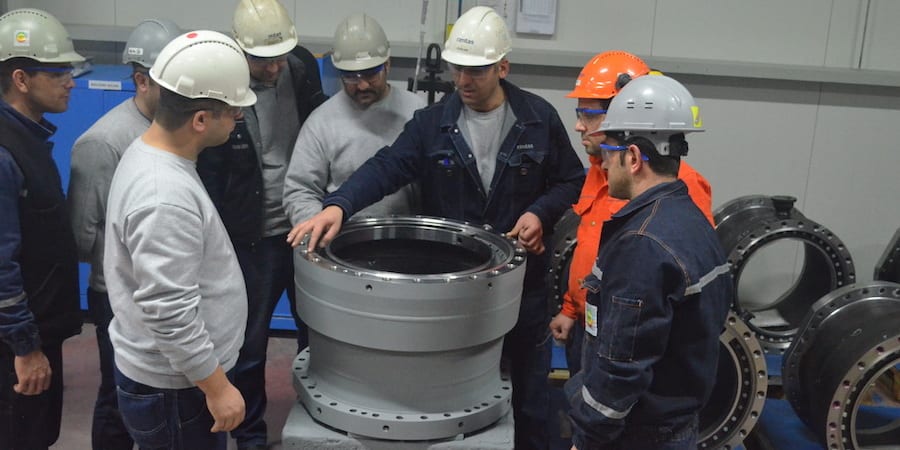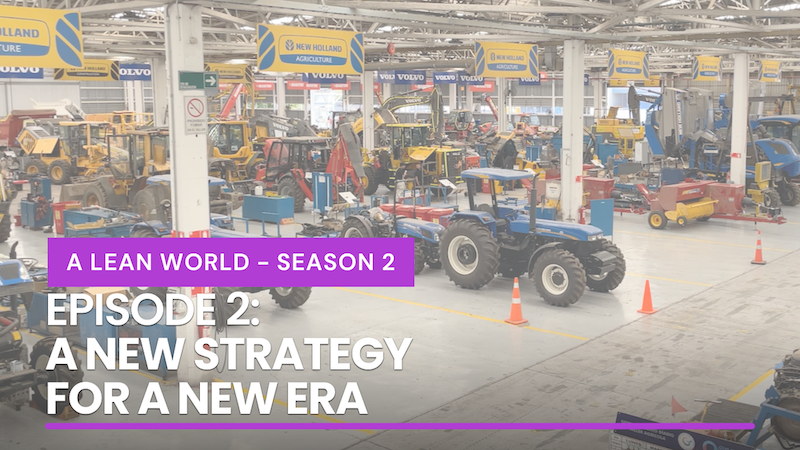
Lean for remote team management
FEATURE – The Covid-19 pandemic has reminded us all that the nature of the work has changed forever. The author discusses remote work and how Lean Thinking can help you make the most of it.
Words: Angélica Regazzini, Lean Expert, Lean Institute Brasil
Throughout human history, location has been a decisive factor in a person’s ability to find and do a job. Working from home wasn’t even a possibility and being close to the workplace was key. The assumption here (try not to laugh) was that if you are in the office, you are working, and all management models were based on this.
Over the past few years, however, things have changed: work has become increasingly more collaborative and, somewhat paradoxically, less dependent on people’s physical proximity - making visibility and value stream management necessary to achieve business sustainability.
Let’s take a look at the past to understand where we are right now.
THE HISTORY OF REMOTE WORKING
Remote working didn’t appear overnight in the 1980s. Long before central corporate headquarters existed, everyone worked from home. As the Industrial Revolution began, however, a need for automation appeared and the newly created factories with gigantic machines and large-scale production processes needed employees to be around to do the work.
Recent advances in infrastructure and technology have allowed many people to own PCs or laptops and connect their homes to the Internet. Being online allows millions of people to work remotely from anywhere in the world. Even from their homes. Between 2005 and 2017, remote working increased by 159%. In 2015, 3.9 million US workers were working remotely, a number that has since then reached 4.7 million people (or 3.4% of the entire population).
The trend is upward. Mark Gilbreath, founder and CEO of LiquidSpace (a platform that offers temporary rental of workspaces), said in a TED Talk interview that “by 2030 about 30% of the corporate workspace portfolio will be flexible.” That means that location will no longer be a limitation to work. The Covid-19 pandemic has suddenly sped up this massive change in the way teams operate (from physical to remote work), causing much trouble for companies, regardless of their size or degree of automation.

Picture credit: Freepik (edited and modified).
THE DIFFICULTIES OF REMOTE WORK, AND THEIR CAUSES
It is clear that it’s no longer possible to manage remote teams using traditional performance metrics, such as clock-in and clock-out times, work hours, or absenteeism. Managers are starting to understand they need to know the value streams, their performance goals, the roles and responsibilities of each resource allocated to those flows, and the expected deliveries for each. It’s the only way to effectively assess productivity and guarantee the achievement of strategic objectives.
Some obstacles are found along the way:
- Making teams accountable and ensuring they are on the right track without falling into the micromanagement trap can be incredibly complex. Managers used to rely on the traditional final validation in order to guarantee on-time deliveries within budget and the desired quality criteria (which is highly subjective). This traditional validation usually required overtime to make adjustments and involved focused efforts by the entire team.
- In remote work environments, there isn’t a way to establish visual controls to guarantee that the work is being done, to extend the work time, or even to mobilize a task force at the last minute. If you are not in a manager’s sightline (and within their voice range), you can become virtually invisible.
- Keeping the same procedures and mindsets from the Industrial Revolution to manage teams doesn’t lead to the desired results. In fact, this model has been inadequate for a few years now, despite actually being sustainable if there is some contingency for firefighting.
LEAN THINKING AND MINDSET SHIFT
Managers must realize that there is a new gemba, which is where lean thinking and practices can be very useful. Here’s how:
- Make value streams visible to all employees
Value streams (just like gravity or radio waves) exist, whether they are visible or not. The sequence of activities necessary to deliver a product or service is mostly “in people’s minds” or transformed into information system algorithms. The first and most important step is to make them visible. Making the flow visible to all employees helps boost both accountability and collaboration within the team, as they realize the cause-and-effect relationship of their activities. This might result in the end of complaints and finger-pointing during coffee breaks, since people are now working remotely.
- Document activities
No matter how many functional areas this flow goes through or how much automation it has, managers need to gather all the people who work in the same flow and document it. Documenting activities, sequencing variation, or methods of execution that vary based on the employee who performs them is essential to understand roles and responsibilities, transitions, and partial deliveries.
In this sense, value stream mapping (VSM) is a lean tool that can be of great help. Usually, this mapping is done in workshops with everyone involved in the flow so that every person can record the activities under their responsibility, the way they perform them, the time spent on them, and especially the problems arising in it.
Besides making the value stream visible, this tool allows everyone to see the flow end-to-end and the greater purpose, which is delivering value to the customer. In addition, grey areas in transition between areas can be immediately addressed. (There are many collaborative digital tools that allow this workshop to be held remotely. Choose one, call the people involved in all stages of the flow, and get to work.)
- Determine partial deliveries
Once the flow is visible, a manager can determine partial deliveries, control points, cycle times, and owners and establish these partial deliveries goals for quality, deadlines, volumes, and even costs (in other words, the expected standard). Frequently, neither the managers nor the teams are able to see the expected goals or standards for the company, which prevents them from identifying deviation before it’s too late.
Obviously, these goals should contribute to the achievement of strategic goals once the entire value stream delivers a company product or service. In fact, alignment is extremely important for the definition of adequate and feasible targets to the flow deliveries (they will represent the True North of the teams).
- Lead with respect
The manager for this new model becomes a leader who facilitates problem solving and people development. Providing alternatives, suggesting potential directions, questioning, and teaching are part of the new duties for them. Giving directions and teaching is very different from telling people what to do. If you solve a math problem for your child, they will not learn how to solve similar problems in the future. Conversely, teaching and developing people makes the flow sustainable in continuous improvement. This way, when a new similar problem arises, people might not even need your help anymore. Not micromanaging people doesn’t mean you will be just sitting around idly!
This topic is the heart of the whole transformation, and there’s much digging to do in order to get to its core. I suggest you read this article by John Shook to get started.
- Practice discipline with your team
People often confuse the words “discipline” and “routine” because in general both refer to activities that you perform with a certain cadence. The difference between the two is your intention. While routine evokes an obligation, discipline refers to determination. Discipline is the routine that has a greater objective and is especially important with remote working. Establishing fixed and paced activities to monitor deliveries and communicate with the team generates comfort and allows for planning. Meetings with the team should primarily take place at the same time, have a set agenda and a visual follow-up for everyone, and be quick. Make use of the numerous visual management tools available, choosing the one that best fits your team’s flow and ability or create your own visual management board.
Don’t address individual or occasional problems at value stream follow-up meetings. Instead, create specific calendars for this purpose. The objective is to understand if the work is on track and if there is an opportunity to help the team. This is the gemba. This is where your team’s performance will be followed up. Daily Management is one of the most powerful lean tools and an excellent option for this purpose. It allows to quickly identify possible deviations, expose problems that need to be solved in order to guarantee deliveries, and bring leadership closer to the reality experienced by the teams. In a daily management meeting, leadership addresses real and tangible daily problems that can interfere with the delivery of strategic objectives, and not only the metrics.
CONSEQUENCES OF THE TRANSFORMATION
Companies that have already adapted to remote and collaborative work are leading the market and getting the first benefits this model brings. Here are some examples:
- A recent two-year study from Stanford University showed a 13.5% increase in productivity when Ctrip (a digital Chinese travel company) call center employees were allowed to work remotely for nine months. The company also saved $1,900 per employee in furniture and space.
- WordPress currently operates with a 100% remote workforce, having closed its physical offices four years ago. In 2017, its net market value was $1.16 billion.
- When CoSo Cloud allowed some of its employees to work remotely, they were 77% more productive than those who remained in the office. More here.
- A survey conducted in 2019 by Airtasker found that remote employees worked on average 1.4 more days per month than those who work in the office. In addition, it found that about 90% of remote workers have no intention of changing their work model, which allows companies to maintain higher retention rates, thus reducing training expenses for new hires.
In general, adopting remote working offers companies a number of competitive advantages:
- Better mental and physical health for employees, who replace the stress of having to face traffic jams with morning exercises and devote more time to their health, which can increase productivity and the overall feeling of happiness.
- Better balance between their personal and professional lives. The increased flexibility in their schedules allows them to balance family time, personal obligations, and career. Fewer interruptions during coffee breaks allows tasks to be completed more quickly.
- Lower costs for both the company and the employee, which means more money can be spent on team-building activities, instead of extra phone lines, coffee machines, rent, and office equipment.
This new work model calls for transparency between the manager and the employees, allowing everyone to see each other’s tasks, goals, and responsibilities to encourage accountability and ensure high performance. Future advances in technology will undoubtedly make remote work increasingly common, which will require managers and employees to adapt to these new times.
Perhaps, the Covid-19 crisis is the push that companies needed to transform the relationship with their workforce. Those that will be able to better incorporate the lessons they are learning and take advantage of the mindset shift that Lean Thinking provides will surely be at an advantage and more prepared to resume business… even though it will never be as usual again.
THE AUTHOR

Read more


FEATURE – Following a recent visit to Toyota, the authors strive to challenge popular beliefs and shed a light on the underlying philosophy that has made TPS a success for over half a century.


CASE STUDY – With plans to double capacity year on year in its new precision machining business, a Turkish company found in lean a way to control growth by stabilizing old processes while new ones are introduced.


WEB SERIES – In the second episode of our docuseries on lean in Chile, we learn how, with a clear purpose and strong commitment from leadership, SKC is transforming its processes and mindset and building a competitive advantage.


FEATURE – The approach described here, first adopted by this Chinese company, directly connects the daily work in manufacturing with an organization’s financial results.

